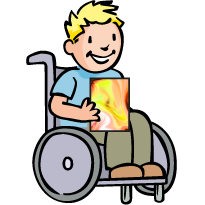Boston Children's Museum
308 Congress Street, Boston, MA 02210
617-426-6500
© Boston Children’s Museum 2025
Website Design by JackrabbitThis activity gives children an opportunity to exercise their creativity while using some unexpected materials and media. Children will also be encouraged to learn and use appropriate vocabulary related to methods, materials and techniques.
This activity is intended for very young children. For a much more effective and beautiful technique of marbleizing paper, try the Suminagashi activity from this curriculum.
Make a print to familiarize yourself with the process. Teams will be making prints from colored shaving cream—if you think it necessary, you can choose to squirt the shaving cream onto the plates for the students rather than handing out the cans of shaving cream for them to squirt onto the plates themselves. Be certain to purchase foamy white shaving cream (Barbasol is an inexpensive brand), rather than the gel style.

Ask your students if they have ever seen paper with colorful patterns on it. How did those patterns get on the paper? Tell your students that they will be making their own paper with patterns on it by “marbleizing” plain paper. They can use this paper to make cards, give as gifts, cut shapes out of—anything they would like!
Make your own marbleized paper!
After each student has made a print, bring the whole group together to talk about what they’ve discovered. Did anyone figure out any helpful techniques for making a good print? Why do they think this kind of print is called “marbling” or “marbleizing”? Does it remind them of anything they’ve seen before? This conversation should last no more than a few minutes.
Have your students make a few more prints and experiment with different techniques. Have them try spreading the colors on the shaving cream with toothpicks, straws, craft sticks, spatulas—anything they can think of. Do the different tools make different patterns? Have them experiment to see if they get different results.